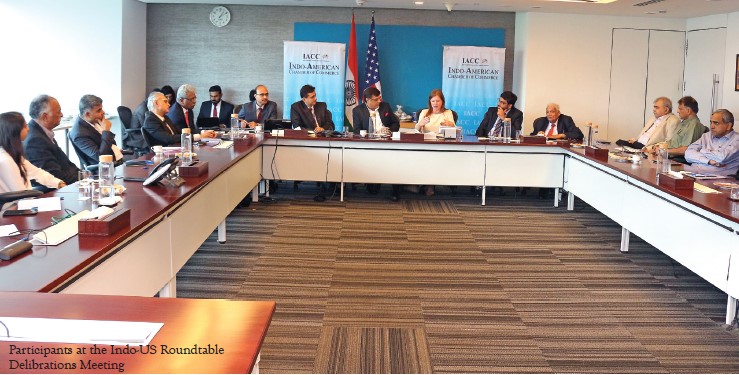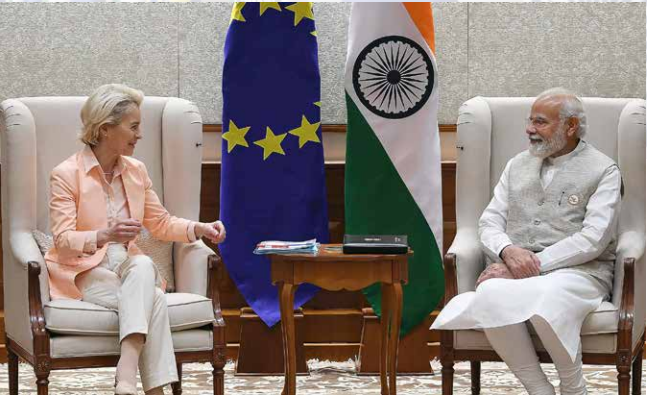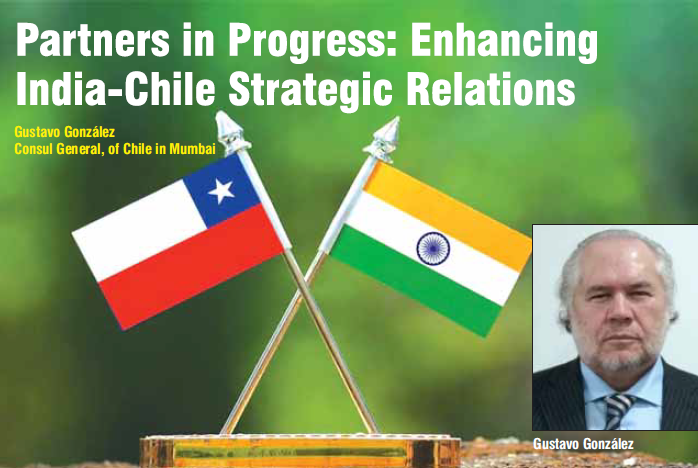IACC and KPMG recently organised a roundtable convention where in leaders from American and Indian companies deliberate on irritants in Indo-US trade. Ivor Vaz reports…
GIVEN THE PACE at which the India-US relationship has been flourishing in recent times, and the huge significance of bilateral trade between these two democracies, the Indo American Chamber of Commerce (IACC) – in conjunction with knowledge partner KPMG – recently organised a roundtable convention in Mumbai, wherein leaders from American and Indian companies found a perfect platform to identify the hurdles affecting bilateral business and seek solutions.
The US is India’s second largest trade partner today after the EU, and is also India’s largest export destination (India is the 13th largest for the US). India’s exports to the US in 2017-18 stood at $ 47.9 billion, while India imported goods worth $ 26.6 billion during the year. The companies operating in the markets of both the countries have been
impacted due to the ‘trade irritants’, including terminating India’s status of beneficiary country from the Generalised System of Preference (GSP) program, data localisation,
e-commerce restrictions and visa related issues. It was widely agreed upon that in order to achieve a target of $ 500 billion between the two countries; there was an urgent
need to move from trade barriers to trade promotions without compromising their respective national interests. The focus had to be on ‘collaborative growth’. One of the key issues discussed at the convention was the withdrawal of GSP benefits to India. Under the GSP programme, nearly 2,000 products including auto components

and textile materials could enter the US duty free. India was the largest beneficiary of the GSP programme in 2017 with $ 5.7 billion imports given duty free status. The GSP benefit conferred over the last three decades has significantly contributed to the growth of trade between India and US, and the participants felt that such mechanism should continue for enhancing trade between the two countries.
Regrettably, the preferential trade status for India under GSP was terminated, w.e.f. June 5, 2019. Participants argued that this retraction would negatively impact the Indian exports of goods to US which were earlier eligible for GSP benefit. The key products/industries that will be majorly impacted include dairy products, items of gold or silver, chemical products, engineering sector, and textile goods. Further, due to the increase in the duty rates for aluminium/steel, exporters in India have suffered a setback and the Indian Government raised a retaliation claim to recover the cost to the tune of $ 241 million approx. levied on steel/aluminium exports.
For the record, removal of GSP is likely to impact US companies as well. While it will cost American businesses over $ 300 million additional tariffs every year, the new tax will result in job losses, cancelled investments and cost increases for consumers. Furthermore, US companies will not get access to the Indian market.
It was suggested that new ventures should be identified for the same – for instance, the textile industry may evaluate setting up of processing units in US especially in areas like defence related textiles and clothing. This shall be a win-win situation for both the countries in a way that the basic raw materials such as yarn and fibre can be exported from India to US markets leading to value addition and employment in the US. Also, an external audit can be conducted of the Indian companies wanting to set up units in US, to certify or rate their strengths and capabilities. It was also felt that the two countries should collaborate and identify points of convergence to support the ‘Make in India’ initiative of the Government of India. Some areas where the convergence could be possible include agro processing, energy (both renewable and nonrenewable), infrastructure and defence.
Data localisation was another central point on the discussion table. The considerable growth in the payment ecosystem in India has warranted safety and security of technology dependent processes and workflows involved in the realm of the payment system. Key concerns included high cost of investment in in storage infrastructure in global servers in order to align with the RBI requirements; and cost of investment in security and monitoring systems for the local servers. There is also concern about third party risk, as payment data is processed and stored in multiple geographies. Therefore, organisations need to gain clarity on countries’ relevant data laws as applicable. Payment System Operators (PSOs) will also need to ensure compliance by third party service providers.
It was consequently suggested that PSOs should identify the flow of payments data in their payment process in order to align with the RBI requirements as applicable. Also, they should aim to segregate the storage mechanism for domestic payments from cross-border payments. Contractual arrangements and periodic assessments of the third party partners could be considered to ensure compliance of the service providers, intermediaries, payment gateways and third party vendors.
One of the ‘touchy’ points up on debate was the allocation of work visas for Indian nationals. It is now a well-known fact that acquiring work visas in the US has become increasingly difficult for Indians due to the ‘Buy America, Hire American’ diktat of US President Donald Trump and related policies leading to the hiring of highly skilled foreign nationals or highest-paid beneficiaries. There has also been a steady rise in H-1B denials and Requests for Evidence (RFEs) with regard to H-1B petitions and visas. Moreover, the US government is also considering a cap on H-1B visas issued each year to Indians at between 10-15% of the annual quota (there is no current country-specific limit on the 85,000 H-1B work visas granted each year, and an estimated 70% go to Indians). US Citizenship and Immigration Services (USCIS) has also reversed an order in which it selects H-1B petitions under the H-1B cap and the advanced US degree advantage. As a result of this change, there is nearly a 15% rise in the number of beneficiaries with a master’s degree or higher from a US institution of higher education being selected under the H-1B quota for FY2020. This has a negative impact on Indian headquartered companies with a large number of workers with US equivalent degrees but no US education.
As a result, millions of dollars are lost via project delays and contract penalties due to high number of RFEs, unpredictability and lack of enough H-1B visas. Also, a large number of man hours are spent to address RFEs and 221(g) notices issued by the US Embassy or multiple Consulates in India. This further slows down in the processing of applications, leading to project delays and losses.
As far as arbitration goes, it was suggested that Alternate Dispute Resolution (ADR), in co-operation with the US for all kinds of trade between the two countries needs to be institutionalised. This culture is already prevalent in US, and India is slowly waking up to it. It was felt that the IACC could play a pivotal role in facilitating this between the two countries by providing that valuable platform.
Leadership of affected companies from various sectors including textiles, foreign banks, technology companies, insurance, and manufacturing, deliberated grassroots-level issues they are facing due to these trade irritants between the two countries and potential solutions were discussed. Attendees at the roundtable deliberations included company Chairmen and CXO level officers. The convention was chaired by Naushad Panjwani, Regional Vice President, IACC; along with Hasnain Shroff, CA; and Jennifer Larson, Deputy Principal Officer, US Consulate General, Mumbai, representing the US Government.






